The Hidden Secrets of Iranian Dining Tables “Sofreh”
WANA (May 06) – Everything begins with the soft sound of spreading a cloth and the clinking of spoons and forks. The moment of eating! The cloth, called “sofreh” (a cloth spread on the ground or carpet for meals in Iran), is spread on the carpet. The scent of saffron, freshly cooked rice, and steaming kebabs fills the air.
More Than Just a Meal…
Laughter can be heard from the kitchen, someone enters with a hot pot, and gradually everyone gathers around the sofreh; no chairs, no table—just a sofreh on the floor, people sitting around it, and dishes that are offered as gifts to shared moments.
In Iran, eating is not just about being full; it’s a ceremony and entertainment. It is an experience where centuries of culture, tradition, and hospitality are woven together, whether in a rural home or an apartment in the city’s heart.
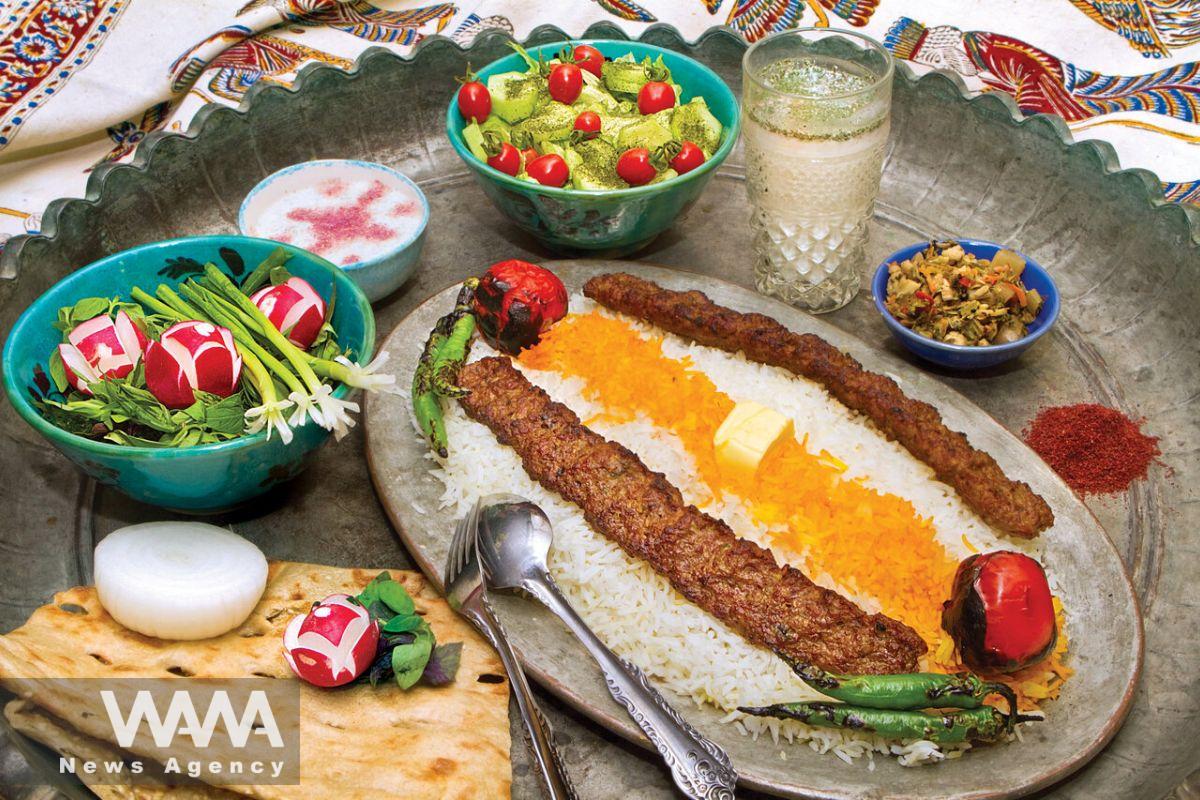
Iranian Kebab with Sangak bread and Doogh. Social media/ WANA News Agency
This ritual usually begins with sitting on the floor, sharing a variety of dishes, endlessly offering food, and, most importantly, being together. Although many families also use tables and chairs nowadays, sitting on the floor and gathering around a sofreh is still a more common choice.
Why? Because the floor isn’t limited by the number of chairs, a sofreh can welcome as many people as needed. The more people, the warmer the atmosphere. Everyone sits closer, shares the same space, makes eye contact, and feels a stronger sense of connection. A table might be more formal, but a sofreh feels more personal, warmer, more genuine, and full of soul.
Gathering Around the Sofreh
Alongside all this, Iranians have customs that can be quite surprising to many foreigners. For example, the meal doesn’t begin until the host or the eldest member of the household sits at the sofreh—even if the food goes cold, respect comes first.
There’s also an unwritten rule about where to sit: the head of the sofreh, which usually has the best cushion or backrest or is closest to the main dish, is typically reserved for the eldest or the guest.
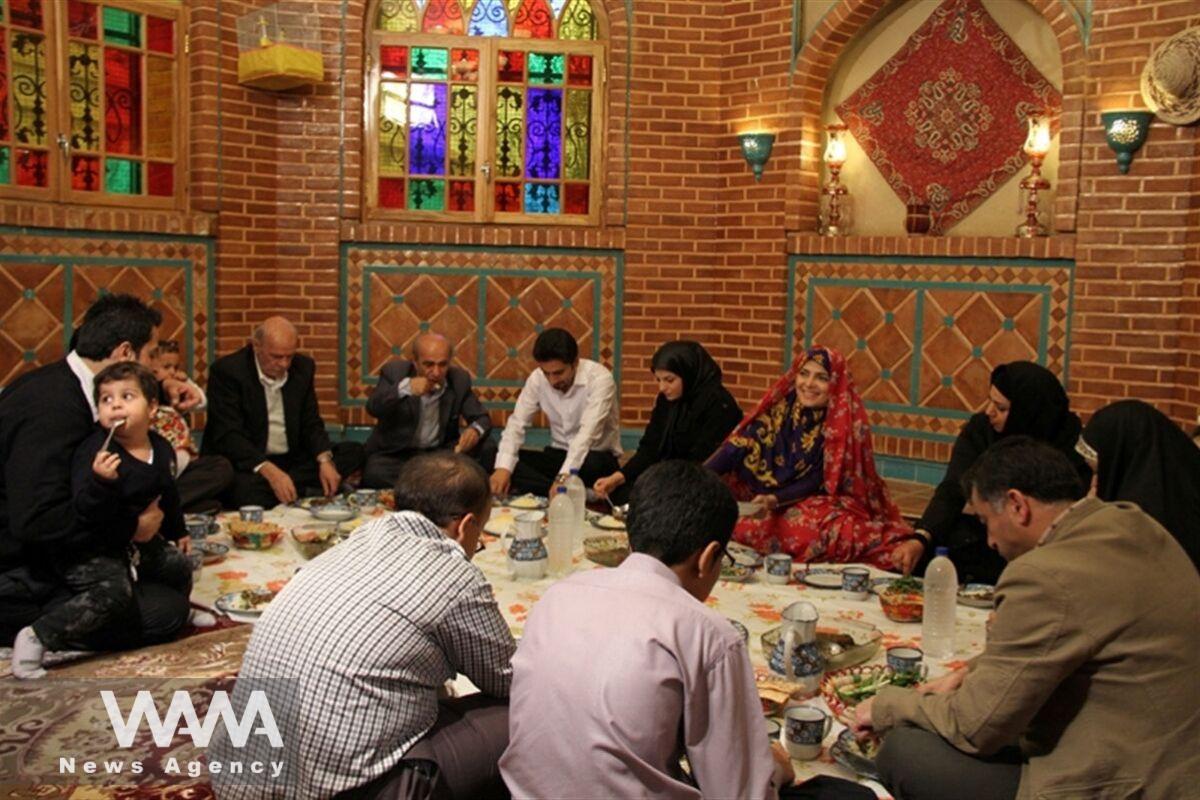
A Family gathering around the Sofreh and having a meal. Social media/ WANA News Agency
A Culture of Generosity and Respect
Serving guests while sitting around a sofreh also has its own etiquette. The kind and warm-hearted host first serves a bit of everything to the guest, and only when they are sure everyone has been well taken care of, does it become their own turn. So, if you find yourself sitting at a sofreh and, without having said a word, a skimmer full of rice is poured onto your plate, don’t be surprised!
Unlike many other countries where people bring their own food to gatherings, in Iranian culture, such a thing is not welcomed. If someone brings food from their own home, the host may feel embarrassed and think they have not been a worthy host.
In some western regions of Iran—areas that are nomadic or rural—even if it’s the first time they see someone and realize they’re visitors, they might slaughter a sheep or a cow out of respect and cook a generous meal for them. As the saying goes, “The guest is God’s beloved,” and Iranians are deeply committed to this belief.
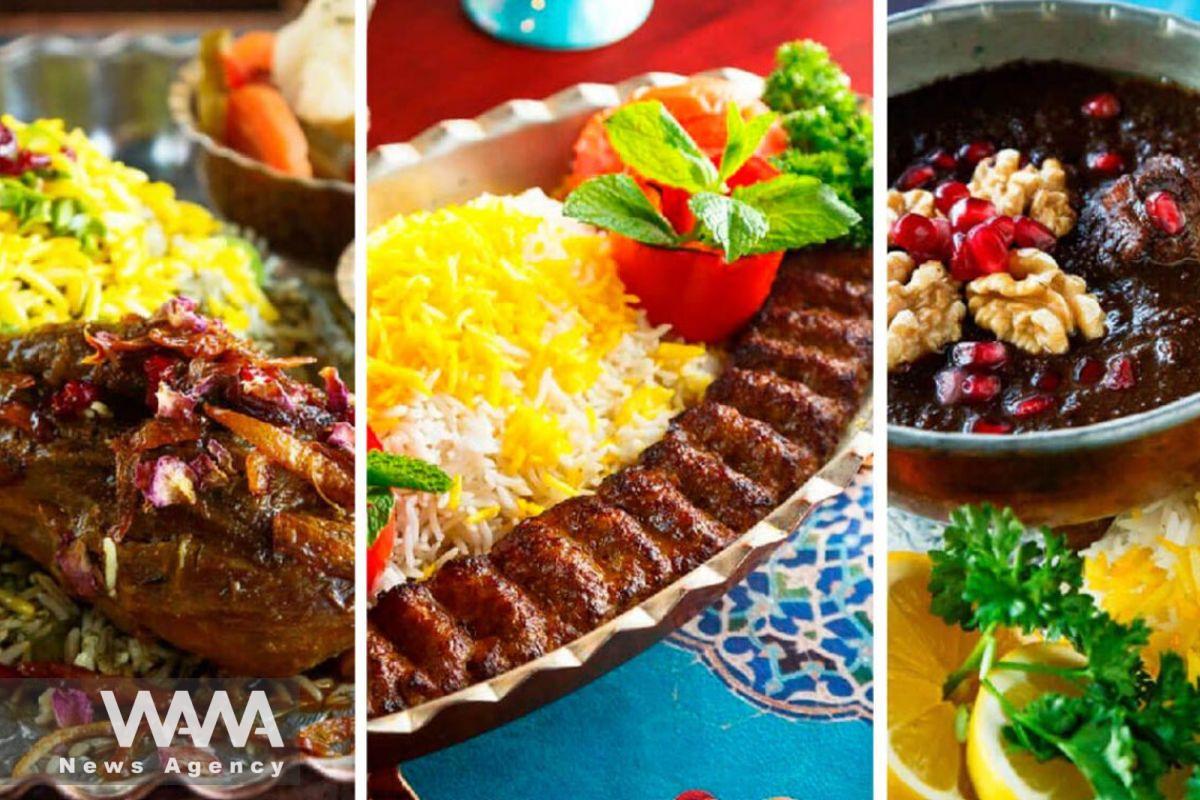
A frame of Iranian Food. Social media/ WANA News Agency
You might wonder how they can be so generous without worrying about expenses. The answer lies in a deep-rooted belief: “God is the provider of sustenance,” and “A guest brings their own sustenance with them.” Therefore, the host is not worried because they believe that God has already sent the guest’s share of sustenance in advance.
Inseparable Elements of Sofreh
One of the inseparable elements of the Iranian Sofreh is bread. In this culture, bread is not just for satisfying hunger—it also serves as a tool for eating.
Iranians use a piece of bread to scoop up food and make a small, hand-held bite called “loqme”, often wrapping or folding the food into the bread, and sometimes it even replaces the spoon.
Meanwhile, in many other countries, bread does not play much of a role in meals— for example, Koreans use lettuce leaves or seaweed to make make similar hand-held bites, not bread.
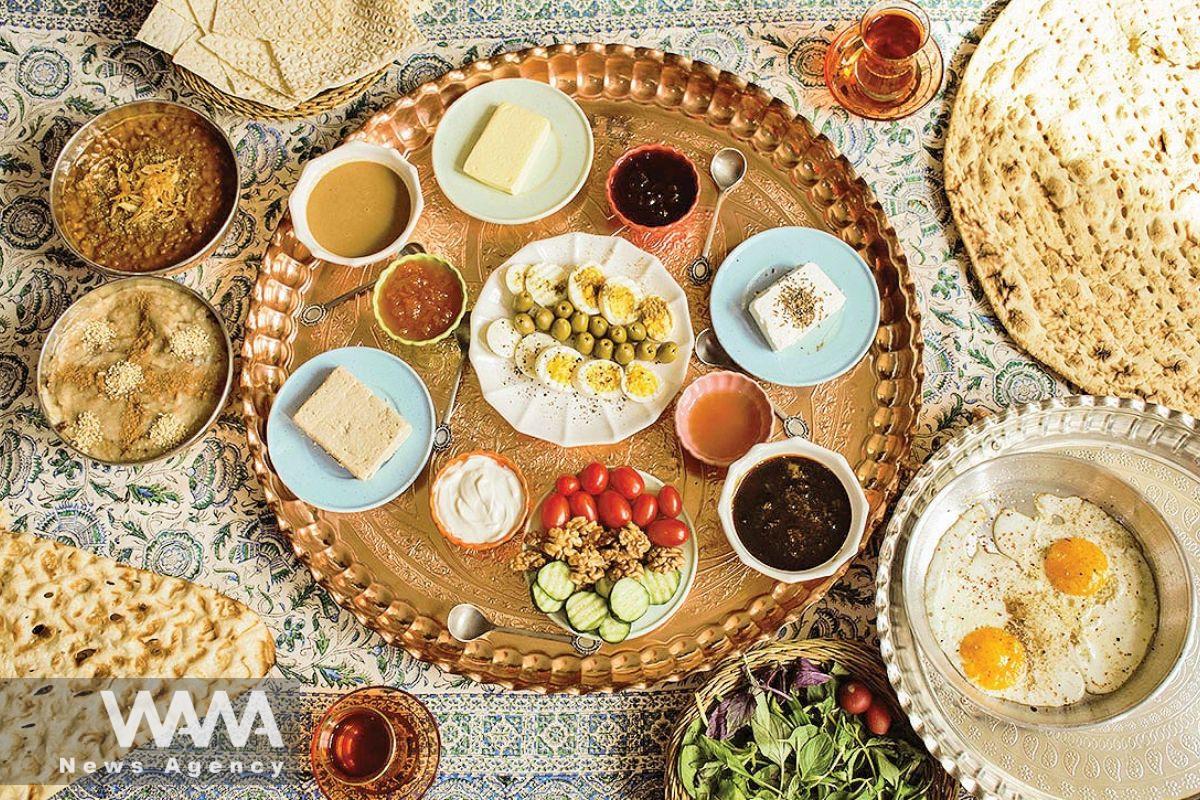
Iranian breakfast Sofreh. Social media/ WANA News Agency
The place of bread on the Iranian Sofreh has led to a great variety of types: Sangak, Barbari, Lavash, Taftoon, and many other local breads, each representing a different region.
Sometimes, even spoons and forks are completely set aside. Some traditional Iranian dishes, especially in local areas, are eaten by hand. For example, in Semnan province, when eating “Tahchin”, people prefer to take bites with their hands.
This act is not considered impolite; rather, it is seen as a sign of respect for traditions and a closer connection to the food. Some even believe that doing so makes the food taste better.
Doogh, Tahdig, and the Feast of Flavors
Next to most meals, you’ll find Doogh, a drink made from yogurt, water, and salt. This cool, frothy beverage might seem strange or unusual to many foreigners, but it holds a special place in Iran, especially on hot days.
And of course, tahdig! Another masterpiece of Iranian cuisine. That crispy, golden layer at the bottom of the pot that everyone loves, and those at the Sofreh eagerly wait for it to arrive. Sometimes it’s made of bread, sometimes potatoes, and sometimes with saffron and yogurt—but always, always, it wins everyone’s heart.
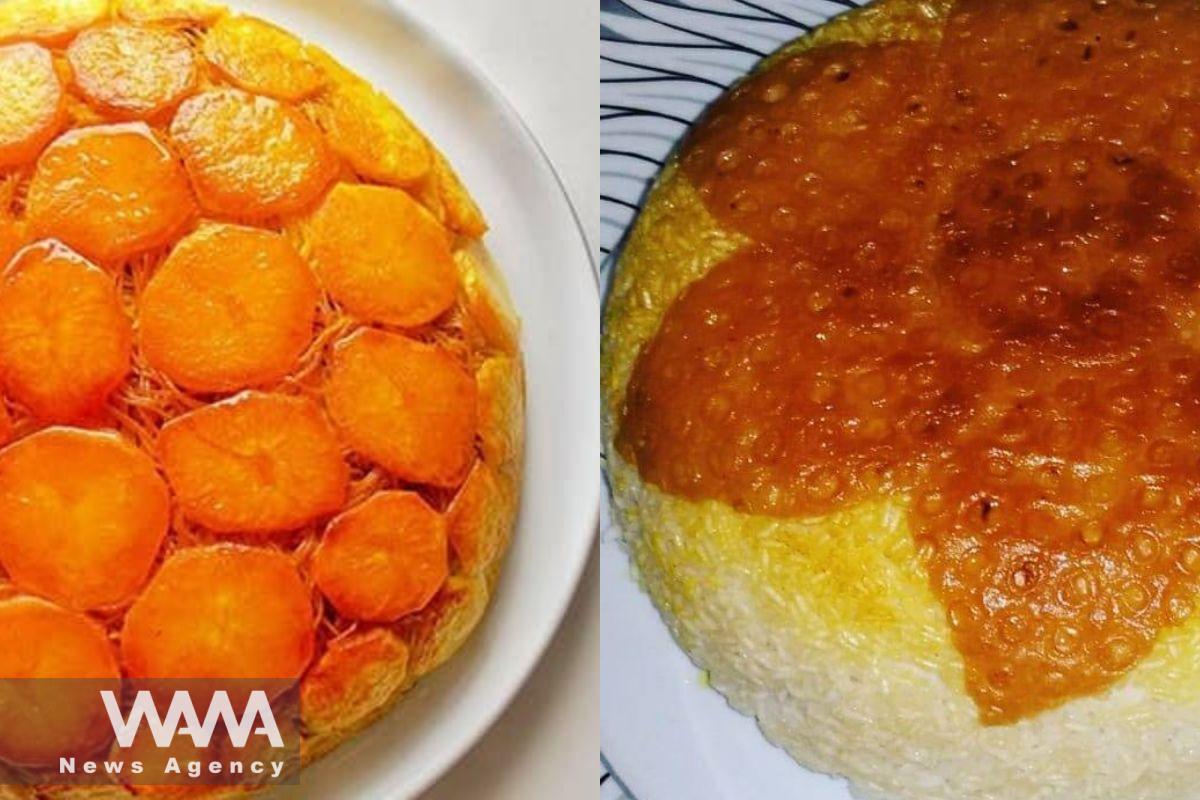
Tahdig, the crispy, golden-brown rice, bread, or sometimes potato crust that forms at the bottom of a pot of steamed rice. Social media/ WANA News Agency
Iranian dishes offer an unparalleled variety: from richly spiced stews like ghormeh sabzi and fesenjan, to different kinds of kebabs, and a wide range of rice dishes with unique combinations—like baghali polo, zereshk polo, albaloo polo, and shirin polo.
Pickles, fresh herbs, Shirazi salad, yogurt with cucumber, and of course desserts like zulbia and bamiyeh or halva—each plays a part in making the Sofreh more colorful and flavorful.
The Art of Sharing: Humility and Ta’arof
But perhaps the most beautiful part of eating in Iran is the humility of the people. When the meal is coming to an end and only one or a few bites remain, everyone passes them up with a look full of consideration and leaves them for the other. No one says anything, but in their hearts, they say, “Maybe someone else wants it.”
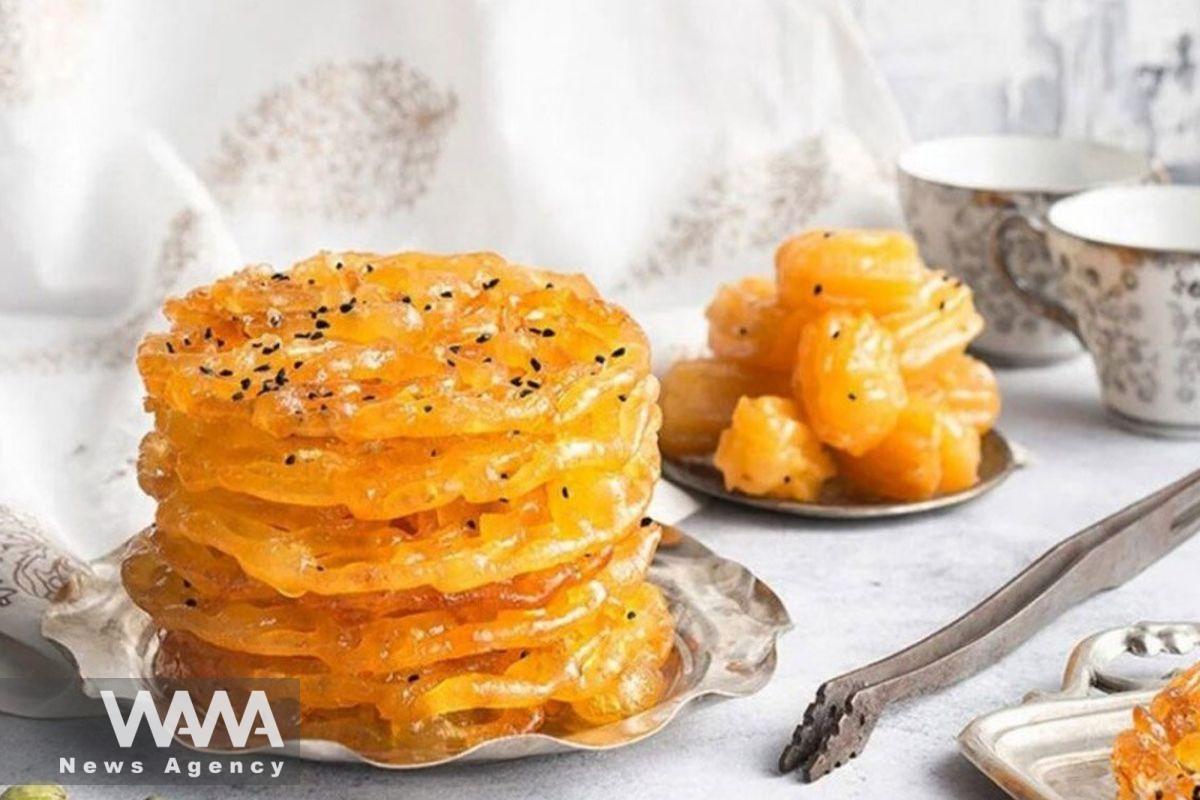
Zulbiya and Bamieh, the traditional Iranian sweets. Social media/ WANA News Agency
And taarof? It’s an inseparable part of the dining culture. Even if someone says they’re not hungry, they’re still kindly offered food—not just once, but several times.
Perhaps that’s why anyone who visits Iran usually returns with a kilo or two gained! Because in this land, it’s not easy to pass by a table. Food is not just food; it’s an invitation—to come closer, to experience a culture, and to taste a flavor of boundless hospitality.












